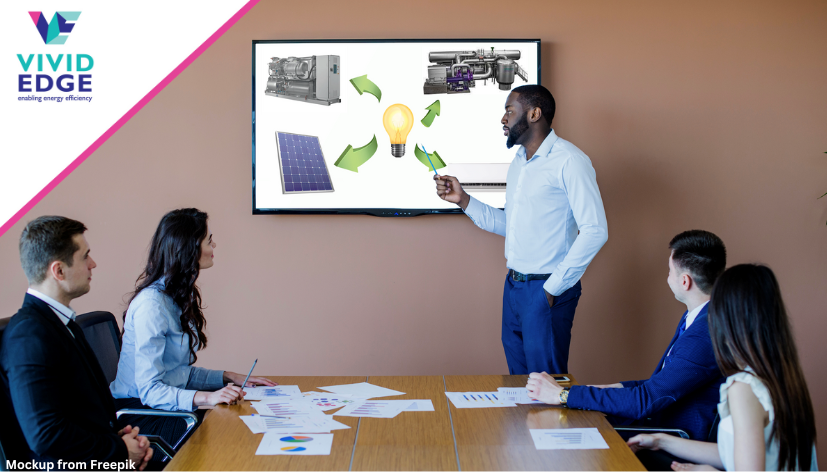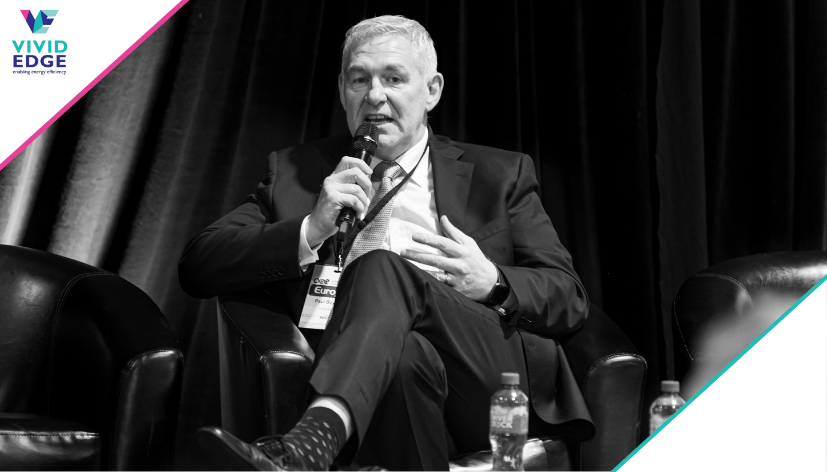3-4 min reading
4 Common Misconceptions About Energy Efficiency in Commercial Buildings
Many business owners encounter misinformation about energy efficiency in commercial buildings, which can cause confusion. Effective energy management is not just about cutting costs; it is a crucial step towards accessing sustained savings, reducing plant wear and tear, reducing carbon emissions, and demonstrating corporate responsibility to customers, stakeholders, and the broader community.
At Vivid Edge, we are dedicated to guiding our customers through this journey, helping them save time and money while making substantial progress to reduce their carbon footprint.
We understand that there are many myths about energy efficiency. By addressing common misconceptions, we can highlight how our innovative model can significantly improve your carbon footprint and reduce energy costs.
Research is Key
Before talking about these misconceptions, it is important to emphasise the importance of doing your own due diligence. When a company decides to tackle energy efficiency, conducting thorough research is crucial. Relying solely on hearsay or unverified advice can lead to misguided investments and suboptimal outcomes, such as investing in inefficient technologies or solutions that don’t align with your company’s long-term goals, resulting in minimal returns and missed opportunities.
Performing due diligence involves evaluating various factors, including your building’s specific energy needs, the credibility of potential solutions, and the track record of service providers. It means understanding the latest technologies, assessing the potential for savings, and considering the long-term benefits of different energy management strategies. This careful approach ensures that the solutions you choose are effective and aligned with your company’s goals and budget.
Next, we will explore four of the most common misconceptions about energy efficiency in commercial buildings.
Misconception 1: Higher Upfront Costs
A common belief is that energy efficiency measures, like upgrading to LED lighting or more efficient equipment, entail a higher upfront expense compared to conventional options. This misconception often discourages businesses from pursuing energy-efficient solutions. However, the Vivid Edge funding model eliminates this financial barrier. We absorb the immediate costs, allowing businesses to concentrate on their core activities without the initial financial strain. The savings from your reduced energy bills cover the cost of the upgrades over time, ensuring that you never pay more than your original energy bills.
Moreover, energy-efficient devices are substantially more economical when considering lifetime energy costs. For instance, LED lighting initially costs more than fluorescent bulbs, but it consumes over 80% less energy and lasts 25 times longer and last over 3 times the life of fluorescent luminaires. Essentially, one LED bulb replaces 25 fluorescent bulbs, offering significant long-term savings, providing a sense of security about the investment.
Misconception 2: Solar Power vs. Energy Efficiency
One common misconception is that installing solar panels should be the first priority before considering energy efficiency measures. Although solar power is a valuable renewable energy source, prioritising energy efficiency upgrades for your building is a more strategic approach. By reducing your overall energy consumption through efficiency improvements, any subsequent solar installation will be more effective and able to cover a higher percentage of your energy needs, keeping the audience well-informed about the best approach. Solar should be considered in conjunction with or after energy efficiency has been addressed.
Misconception 3: Oversized Air Conditioners
Many people mistakenly believe using oversized air conditioners is more energy efficient because they cool a room faster, leading to shorter runtime. However, this is not the case. The total cooling output and energy consumption remain the same. Oversized units also struggle to effectively remove humidity, resulting in mould growth and shorter service life due to frequent on-and-off cycling. Unless specifically design to deliver efficient services at partial loads, most oversized plant are less efficient in delivering the required services.
Misconception 4: Oversized Boilers and Furnaces
There is a widespread misconception that larger boilers and furnaces save energy by operating less frequently, similar to how oversized air conditioners are perceived. However, in reality, oversized heating systems do not effectively reduce energy consumption. Instead, they often lead to increased maintenance costs caused by short cycling. Short cycling can lead to premature wear and tear on the system, frequent breakdowns, and higher repair costs, negating any potential energy savings.
The Vivid Edge Advantage
A professional energy assessment or audit is essential to identifying the most effective energy efficiency measures for your commercial building. The team of experts at Vivid Edge designs customised solutions for your specific needs. We use our capital to upgrade your energy-using infrastructure, including heating, cooling, lighting, and control systems. In return, you pay a monthly service fee that is lower than your original energy bills for a set period.
This model not only reduces your carbon footprint but also ensures cost savings without the upfront expense. By dispelling these misconceptions and utilising the Vivid Edge model, businesses can make informed decisions that result in significant energy savings and a reduced environmental impact.



